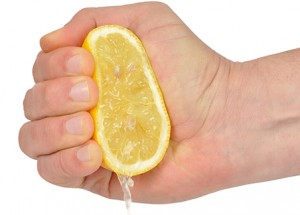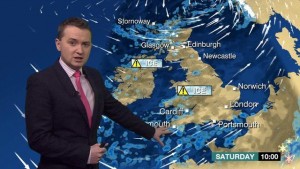Troubleshooting your science lessons
So, we have all had them. The lesson is well planned, the resources have been carefully selected but somehow students have left the classroom learning little, behaviour was poor and you feel frazzled! So what went wrong?! Time to reflect and try again. Hopefully the ideas below may provide some help…
1.0 Squeeze the lemon – ensure the learning from each episode is maximised
 Sometimes we create activities that are clear, well pitched and engaging but we don’t use them fully. We need to diagnose misconceptions, extend thinking and reflect on the learning of each episode if we want to produce great lessons. If we think of an activity as a lemon and the potential learning as the juice – then we need to make sure we squeeze the lemon fully before moving on.
Sometimes we create activities that are clear, well pitched and engaging but we don’t use them fully. We need to diagnose misconceptions, extend thinking and reflect on the learning of each episode if we want to produce great lessons. If we think of an activity as a lemon and the potential learning as the juice – then we need to make sure we squeeze the lemon fully before moving on.
Problem: there is a Do it Now activity on the board where students have to match chemical formulae to names of compounds. Students complete the task. The teacher reviews the answers and then moves on.
Solution: when students are completing the Do it Now walk around the classroom and look at their answers. Get students to correct their own work with green pen when you review the answers using cold calling – write answers on the board. Spend time briefly reviewing common mistakes from the task e.g. NaCl NOT nacl and adjust planning for the rest of the lesson with the formative information gleaned from the Do it Now. You may want to set an additional question to be sure students now understand.
2.0 Make lemonade – ensure the learning from each episode is used in the next
 A lesson needs to make sense to students if it’s going to be enjoyed and lead to learning. This requires a narrative that flows from one task to the other, linking lesson episodes together. Sometimes this does not happen and each task stands alone and doesn’t build on the learning from the previous task. Whilst sometimes this will be desired, we should aim to plan most lessons so that the learning from one task is used, and built in the next task to allow consolidation and application. If students can apply they probably understand. So, like making lemonade, we squeeze the lemon and then use the juice – we definitely don’t throw it away!
A lesson needs to make sense to students if it’s going to be enjoyed and lead to learning. This requires a narrative that flows from one task to the other, linking lesson episodes together. Sometimes this does not happen and each task stands alone and doesn’t build on the learning from the previous task. Whilst sometimes this will be desired, we should aim to plan most lessons so that the learning from one task is used, and built in the next task to allow consolidation and application. If students can apply they probably understand. So, like making lemonade, we squeeze the lemon and then use the juice – we definitely don’t throw it away!
Solution: use the learning and key ideas from one task as the starting point for the next task. Using a context that runs throughout the lesson can help link ideas together. Think about what is happening to the outcome of the task – how is it going to be used in the next part of the lesson? The EPIBA lesson planning model can help here: introduce, build, apply.
3.0 Don’t do a weather show – introduce, introduce, introduce…. zzZZZ
 Sometimes we can forget just how much information we are teaching students. If there is too much knowledge in a lesson this can result in a ‘weather show’ where we present information continually to students, through endless PowerPoint slides. High-quality direct instruction is good, but we need to give opportunities for students to develop and consolidate thinking and make meaning. Endless presentations don’t allow opportunities to assess understanding and require all students to move at the same rate for a prolonged period of time – this will lead to poor differentiation which may result in boredom and poor behaviour.
Sometimes we can forget just how much information we are teaching students. If there is too much knowledge in a lesson this can result in a ‘weather show’ where we present information continually to students, through endless PowerPoint slides. High-quality direct instruction is good, but we need to give opportunities for students to develop and consolidate thinking and make meaning. Endless presentations don’t allow opportunities to assess understanding and require all students to move at the same rate for a prolonged period of time – this will lead to poor differentiation which may result in boredom and poor behaviour.
Solution: make sure every lesson has a task that students can use, develop and consolidate ideas that lasts for at least 15 minutes. This could be book work, group work, model making, practical work, worksheet or open writing task. This is important as it gives students (i) the opportunity to apply what they have learnt and (ii) move at different rates – it also gives you time to intervene. Can you teach your lesson if the power goes off? If you can, it’s probably going to be a good one!
4.0 Develop skills, don’t just do them
Many science teachers love practical work and so doing practical work can appear a goal in itself. But the research tells us that practical work does not always lead to learning. I think one reason for this is that we are not always clear on exactly what skills we are developing within the practical. Doing the practical is not enough; to develop progression within the lesson and over time we need to articulate exactly what skills we want our students to develop. We can then plan science lessons that specifically teach those skills.
Problem: the lesson is on Hooke’s law. Students carry out the practical and write the aim, equipment list, method, results table, graph and conclusion.
Solution: there is too much in this lesson to develop all skills. Use split screen objectives to identify exactly what skill you want to explicitly teach and develop in this lesson e.g. you may want to focus on how to draw results tables or how to draw a line graph. Focus on one area and develop it – this will make the lesson much more likely to be successful.
5.0 Avoid cognitive overload – learners think differently to experts
 Cognitive overload is an easy trap for science teachers to fall into. We often want our students to master conceptually complex ideas at the same time as mastering difficult practical procedures. This can overwhelm students and can encourage surface learning approaches. Think back to when you learnt to drive – would it be a good idea to learn about the physics of motion at the same time?! Practical lessons can overwhelm students so think carefully about working memory and cognitive load.
Cognitive overload is an easy trap for science teachers to fall into. We often want our students to master conceptually complex ideas at the same time as mastering difficult practical procedures. This can overwhelm students and can encourage surface learning approaches. Think back to when you learnt to drive – would it be a good idea to learn about the physics of motion at the same time?! Practical lessons can overwhelm students so think carefully about working memory and cognitive load.
Problem: it is the first lesson on cells. The teacher gets students to use a microscope to look at animal and plant cells. Students start messing about.
Solution: think about whether you want to develop the conceptual idea of what a cell is or the procedural skill of how to use a microscope – introducing both at the same time will overload working memory. Plan schemes of work to teach cells and microscopes separately. At the end of the unit plan an opportunity to bring conceptual thinking and procedural skills together in the context of an investigation; now your students can work as real scientists!
- Planning lessons: the EPIBA approach
- Clearly defined lesson objectives
- The Do Now
- Activate prior knowledge
- Challenge your students
- Use a context
- Challenge all students appropriately
- Use direct instruction to provide clear explanations
- Model abstract ideas in concrete ways
- Use questioning to probe understanding
- Check for understanding – give and get feedback
- Troubleshooting – why did it go wrong?
